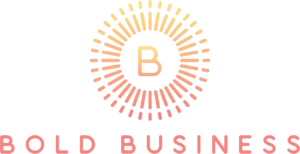In today’s digital landscape, UX/UI design plays a crucial role in creating exceptional user experiences. If you’re aspiring to start a career in UX/UI design, participating in a UX/UI Design Employment Assistance Program can provide you with the necessary skills and support to succeed. In this blog post, we will explore what these programs entail and how they can benefit you in launching your career.
What is a UX/UI Design Employment Assistance Program?
A UX/UI Design Employment Assistance Program is a comprehensive training program designed to equip aspiring designers with the skills and knowledge needed to excel in the field. These programs often combine theoretical learning with practical hands-on projects, mentorship, and job placement assistance. The primary goal is to bridge the gap between theoretical education and real-world industry requirements.
Why Participate in a UX/UI Design Employment Assistance Program?
By joining a UX/UI Design Employment Assistance Program, you gain several advantages that can accelerate your career growth:
a. Skill development and enhancement: These programs offer structured courses and training materials to help you develop and refine your UX/UI design skills, including user research, wireframing, prototyping, and usability testing.
b. Professional guidance and mentorship: You’ll have access to experienced instructors and industry professionals who can provide valuable insights, feedback, and guidance throughout your learning journey.
c. Networking opportunities: Connecting with fellow participants, instructors, and industry experts allows you to expand your professional network, opening doors to potential job opportunities and collaborations.
d. Access to job placement assistance: A crucial aspect of these programs is their focus on helping participants secure employment. They often provide career counseling, resume building, interview preparation, and job placement support to increase your chances of landing your dream UX/UI design role.
e. Real-world project experience: Many programs incorporate real-world projects or client briefs, allowing you to apply your skills in practical settings. This hands-on experience helps build a strong portfolio, demonstrating your abilities to potential employers.
Components of a Successful UX/UI Design Employment Assistance Program
To ensure a program’s effectiveness, it should include the following key components:
a. Comprehensive curriculum and training materials: A well-structured curriculum covering essential UX/UI design concepts, tools, and methodologies ensures a solid foundation for your learning journey.
b. Hands-on projects and practical assignments: Engaging in real-world projects or case studies allows you to apply what you’ve learned and develop practical problem-solving skills.
c. Experienced instructors and industry professionals: Seasoned instructors who have industry experience bring valuable insights and mentorship, guiding you through the program and sharing practical tips.
d. Career counseling and portfolio development support: Assistance in building an impressive portfolio, crafting a standout resume, and preparing for interviews helps you present your skills and experience effectively.
e. Connections with industry partners and potential employers: Collaborations with industry partners, guest lectures, and networking events create opportunities to interact with professionals in the field and potentially secure employment.
How to Choose the Right UX/UI Design Employment Assistance Program
To find the most suitable program for your needs, consider the following factors:
a. Accreditation and reputation: Look for programs with recognized accreditation or positive reviews from past participants.
b. Curriculum and course structure: Evaluate whether the program covers relevant topics and offers a well-structured curriculum that aligns with industry standards.
c. Instructor qualifications and expertise: Research the instructors’ backgrounds and expertise to ensure they possess the necessary experience to guide you effectively.
d. Success stories and alumni reviews: Check for success stories and feedback from previous program participants to gauge the program’s impact and outcomes.
e. Job placement statistics: Investigate the program’s track record in helping participants secure employment, such as their job placement rates or alumni employment profiles.
Real-life Success Stories
Real-life success stories can inspire and motivate you to pursue a UX/UI Design Employment Assistance Program. Here are a few examples:
a. Sarah, a program graduate, landed a UX designer role at a renowned tech company within two months of completing the program. The mentorship and portfolio development support she received proved invaluable during the hiring process.
b. John, who lacked formal design education, joined a program and gained practical skills through hands-on projects. His newly acquired portfolio and industry connections helped him secure a UI designer position at a design agency.
c. Emily, a career changer, participated in a program that provided comprehensive training and networking opportunities. She successfully transitioned from a marketing background into a UX researcher role at a leading e-commerce company.
Takeaway:
Participating in a UX/UI Design Employment Assistance Program can significantly boost your career prospects in the design industry. By acquiring essential skills, receiving mentorship, and accessing job placement assistance, you can pave the way for a successful UX/UI design career. Research programs carefully, considering their components and success stories, to find the right fit for your goals. Start your journey today and unlock the potential to become a skilled and sought-after UX/UI designer.
